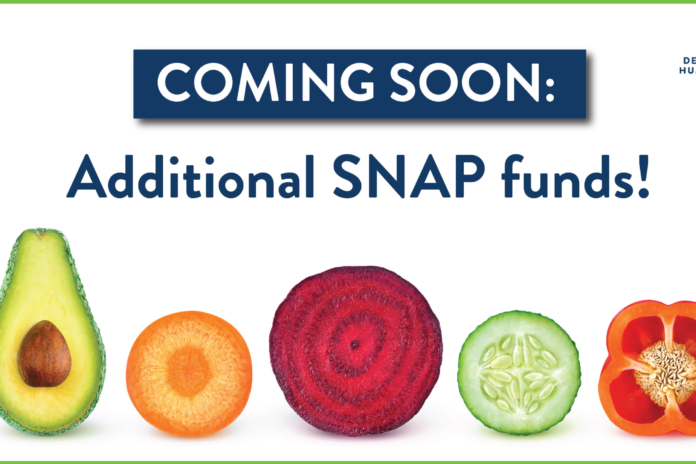Many of the costs associated with the COVID-19 pandemic aren’t easily visible – nursing home residents’ deaths, for example, as well as the increasing number of opioid overdoses, and the businesses going bankrupt due to combined government-mandated restrictions and reduced consumer demand.
About 854,600 people have filed unemployment claims since March after Minnesota’s first case of COVID-19, pushing many people onto federally bankrolled food assistance programs, spiking costs by over $30 million.
The Supplemental Nutrition Assistance Program (SNAP) is the federal program that the Minnesota Department of Human Services (DHS) administers to help supplement the nutrition needs of people with low incomes.
SNAP eligibility depends on a household’s income and size.
According to DHS, households with an income at or below 165 percent of the federal poverty guideline may be eligible. That’s about $2,933 a month, or about $35,000 a year for a three-person family.
A DHS self-screening tool can help determine eligibility.
SNAP is designed as a safety net to serve more people during times of economic downturn.
For example, in March 2020, Minnesotans filed 286,817 unemployment claims, an increase of 272,664 from the claims filed March of 2019.
In February 2020, SNAP paid $40 million to 370,313 recipients, down from $42.3 million for 391,528 recipients in February 2019.
In March 2020, the program paid $40.1 million for 370,677 recipients, down from $41.9 million from March 2019 expenditures for 386,794 recipients.
In April 2020, SNAP paid $59.2 million for 404,496 recipients, an increase from $42.1 million from April of 2019 for 384,981 recipients.
In May 2020, the program paid $76.6 million for 423,633 recipients. A year prior, that cost $42 million for 384,267 recipients – $34 million less.
Those numbers may continue climbing as the $600 federal Pandemic Unemployment Benefits expired at the end of July, and state and federal unemployment benefits count as income for SNAP.
Many people may also return to work, countering that number.
It’s unclear what action Congress will take in extending or letting the federal benefits expire, but either decision will impact future SNAP costs.
– – –
This article was republished with permission from The Center Square.











